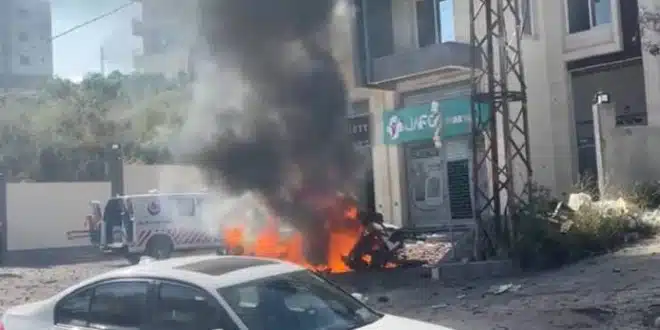Israeli airstrikes on Wednesday targeted two separate areas in southern Lebanon, resulting in the deaths of two individuals and marking the latest escalation despite an existing ceasefire between Israel and Hezbollah. The attacks occurred in the towns of Ain Baal and Yater, both located in Lebanon’s south, and continue a series of Israeli strikes carried out over three consecutive days.
In Ain Baal, located in the coastal Tyre district, a drone strike hit a vehicle earlier in the day. The Israeli military later confirmed it had targeted a Hezbollah operative in the region, claiming he played a key role in setting up infrastructure for manufacturing high-precision surface-to-surface missiles. Hours after the Ain Baal incident, a second Israeli drone struck another vehicle in Yater.
Civilian Impact and Ongoing Military Activity
According to Lebanon’s health ministry, the strike in Yater left one person dead and another injured. Local reports indicated the individual killed was operating a bulldozer to clear rubble from his home, which had previously sustained damage during ongoing conflict. The National News Agency, a state-run outlet, confirmed these details, stating that the man was involved in post-conflict reconstruction at the time of the strike.
In a separate incident on the same day, an Israeli quadcopter dropped four bombs in the al-Ain region near Kfarshouba, also in the south. The frequency and geographic spread of the attacks suggest a broadening of Israel’s operational focus in southern Lebanon.
These latest developments follow two earlier days of Israeli operations, during which Israeli forces reported the deaths of two Hezbollah members. Despite a ceasefire agreement reached in November, which was intended to bring an end to prolonged hostilities—including a two-month period of open warfare—the Israeli military has maintained active operations.
Ceasefire Challenges and Diplomatic Pressure
Under the terms of the truce, southern Lebanon should only be patrolled by the Lebanese Army and United Nations peacekeeping forces. However, Israel continues to hold positions in five southern areas it considers to be of strategic importance. The ongoing presence of Israeli forces, combined with repeated airstrikes, has drawn condemnation from Lebanese officials, who have urged international actors to intervene and pressure Israel to cease its military actions and withdraw remaining troops.
Diplomatic tensions remain high, particularly in light of recent comments from U.S. Deputy Middle East Envoy Morgan Ortagus. Speaking earlier in the week, Ortagus asserted that Lebanon still faces the challenge of further disarming Hezbollah in the aftermath of the latest conflict. Her remarks reflect ongoing concerns in Washington about Hezbollah’s military capabilities and the Lebanese state’s ability to enforce disarmament mandates under international agreements.
As strikes persist, the situation highlights the fragility of the ceasefire and the broader risks to regional stability. With both military and political dimensions in play, pressure continues to mount on all parties involved to uphold their obligations and prevent renewed escalation.


